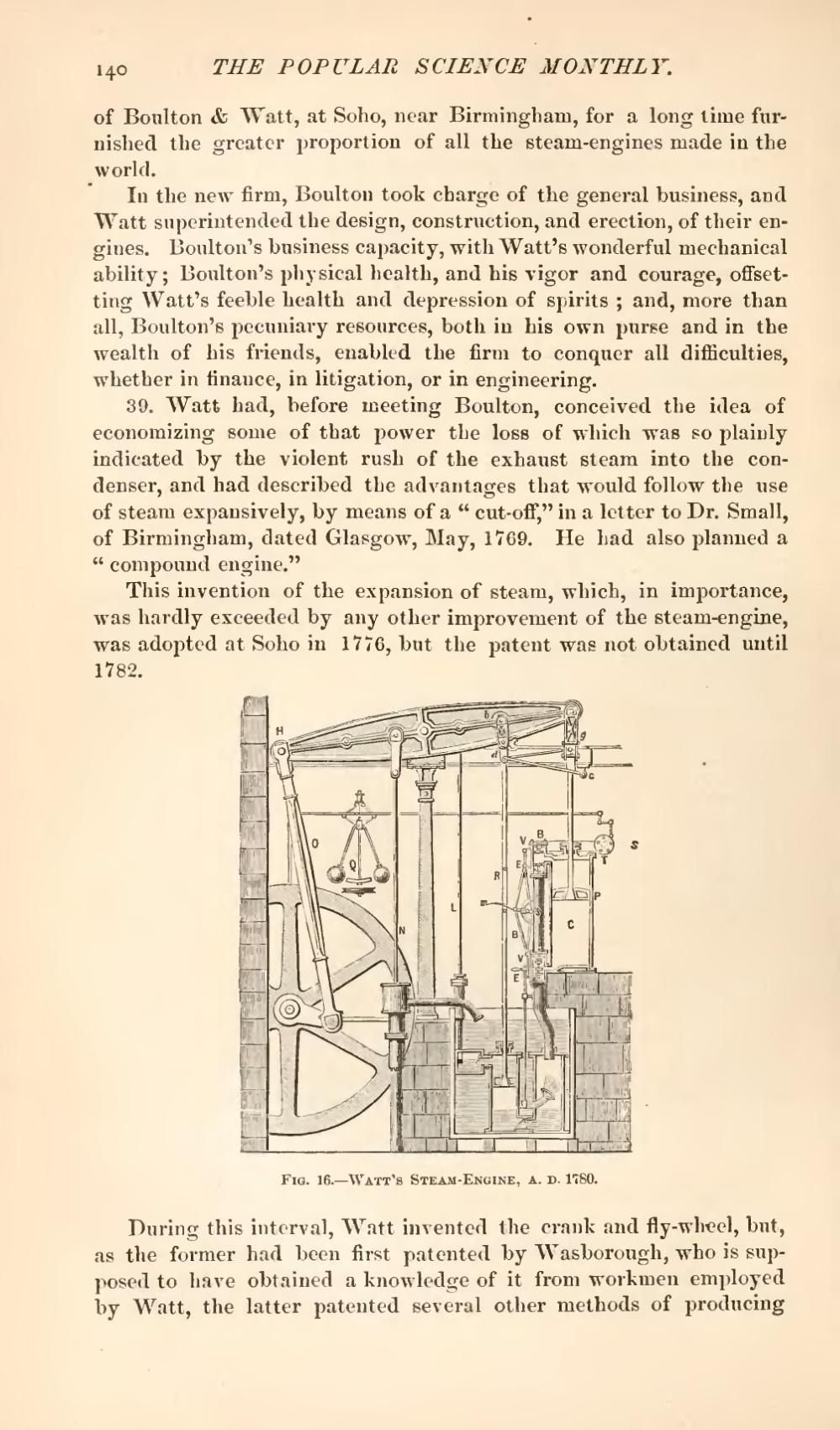of Boulton & Watt, at Soho, near Birmingham, for a long time furnished the greater proportion of all the steam-engines made in the world.
In the new firm, Boulton took charge of the general business, and Watt superintended the design, construction, and erection, of their engines. Boulton's business capacity, with Watt's wonderful mechanical ability; Boulton's physical health, and his vigor and courage, offsetting Watt's feeble health and depression of spirits; and, more than all, Boulton's pecuniary resources, both in his own purse and in the wealth of his friends, enabled the firm to conquer all difficulties, whether in finance, in litigation, or in engineering.
39. Watt had, before meeting Boulton, conceived the idea of economizing some of that power the loss of which was so plainly indicated by the violent rush of the exhaust steam into the condenser, and had described the advantages that would follow the use of steam expansively, by means of a "cut-off," in a letter to Dr. Small, of Birmingham, dated Glasgow, May, 1769. He had also planned a "compound engine."
This invention of the expansion of steam, which, in importance, was hardly exceeded by any other improvement of the steam-engine, was adopted at Soho in 1776, but the patent was not obtained until 1782.

Fig. 16.—Watt's Steam-Engine, a. d. 1780.
During this interval, Watt invented the crank and fly-wheel, but, as the former had been first patented by Wasborough, who is supposed to have obtained a knowledge of it from workmen employed by Watt, the latter patented several other methods of producing

